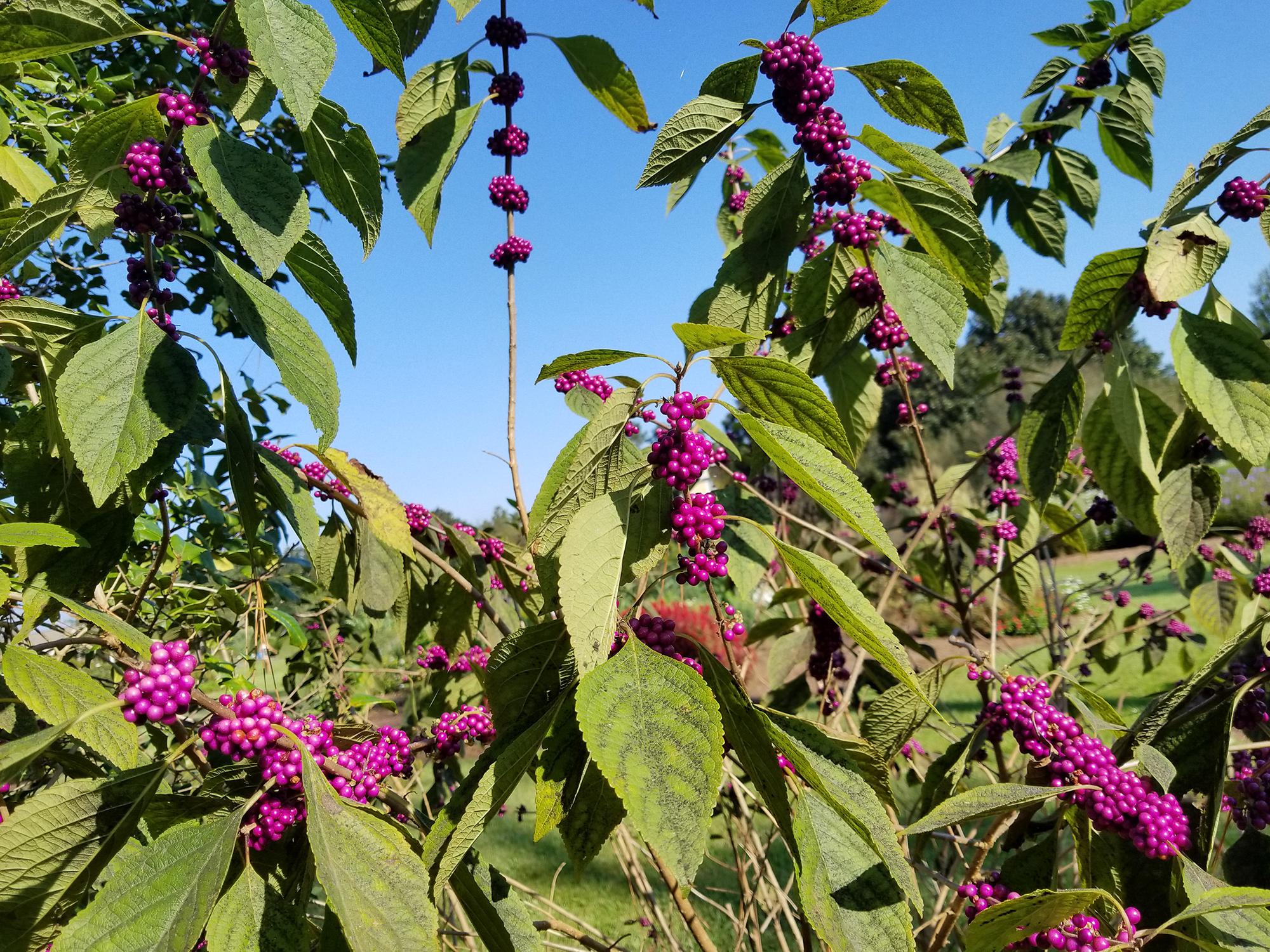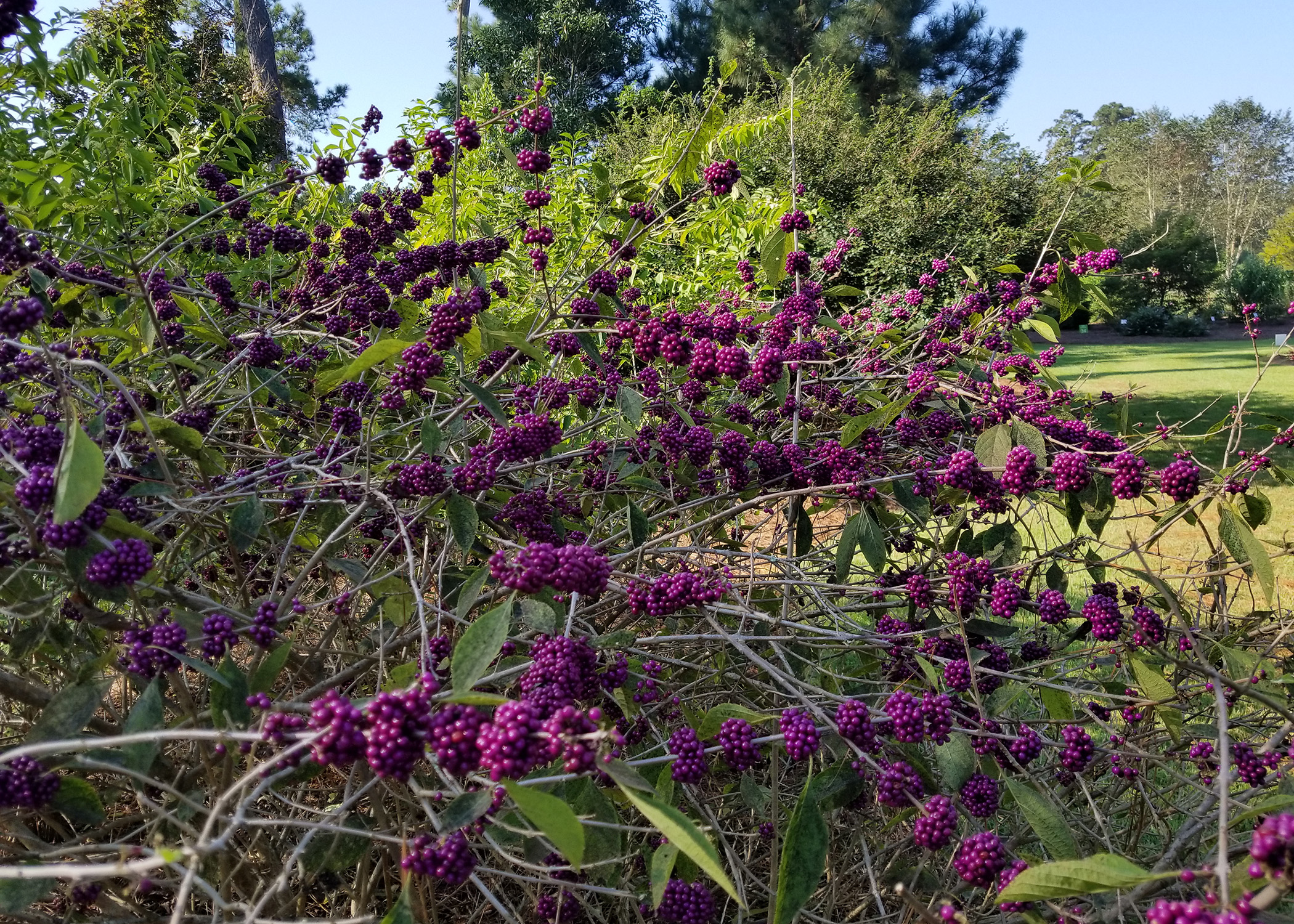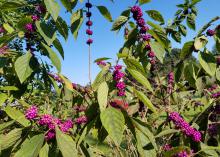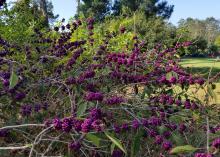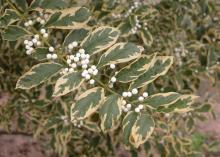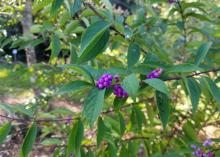Information Possibly Outdated
The information presented on this page was originally released on October 16, 2017. It may not be outdated, but please search our site for more current information. If you plan to quote or reference this information in a publication, please check with the Extension specialist or author before proceeding.
Use native beautyberry for fall landscape color
After cleaning the mess from Hurricane Nate, I had the chance to participate in two outstanding field days in Mississippi and Louisiana. I really enjoyed the plantings at the LSU AgCenter Hammond Research Station and the Mississippi State University Truck Crops Branch Experiment Station in Crystal Springs.
These events inspired me to share ideas over the next several weeks for great plants to put in your garden and landscape that you will enjoy next fall.
One native shrub that I absolutely adore is the American beautyberry, known scientifically as Callicarpa americana. While driving, you can frequently see this plant along the edges of wooded areas, but it is used much too infrequently in our home landscapes.
In the spring, if you look closely, you will see pale, pink flowers tucked in the axils of the leaves; this is the space where the leaf meets the branch. During the summer, our native beautyberry is content to be a background for the showy, hot-weather annual color, but when the temperature starts to drop, look out.
When the beautyberry shrubs start to color up, you cannot miss the almost metallic sheen of the magenta- purple berries wrapped up and down the arching stems in tight clusters.
But you are not limited to purple berries. There are selections with white and pink berries. I really like the Welch’s Pink selection that was first found in west Texas. It has pastel-pink berries that whiten into the fall. A newer selection for me is Bonner Creek, which has dark-burgundy berries that remind me of the color of a fine merlot.
Other species of beautyberry are available. Japanese beautyberry, known scientifically as Callicarpa japonica, has bright-purple berries held out from the branches on small stems. And I would be remiss if I didn’t include the beautyberry that I found in 2000, known as Callicarpa dichotoma and called “Duet.” The foliage is variegated, and the plant produces small, white berries in the leaf axils.
Regardless of the variety, beautyberry berries persist into the fall and winter until birds pick the branches clean.
American beautyberry grows up to 4 feet tall and wide. In north Mississippi, this plant may die back to the ground in severe winters. It is a good practice to prune the plant back in early spring to about 6 inches, as this keeps the plant fuller and more compact.
Beautyberry has a loose and open habit. One plant can be attractive, but a grouping of two or three creates a full cluster. The plants will cross pollinate, which helps ensure the fullest fruit production.
Beautyberry can tolerate dry soil conditions and part shade, but the healthiest plant and best fruit presentation is in the full sun. Be sure to maintain consistent soil moisture.
While there are different species of beautyberry with differences in mature size and berry arrangement, all are generally referred to as beautyberry in garden centers and nurseries. In my opinion, what the plants are called doesn’t matter; just be sure to plant one or two in your landscape.

